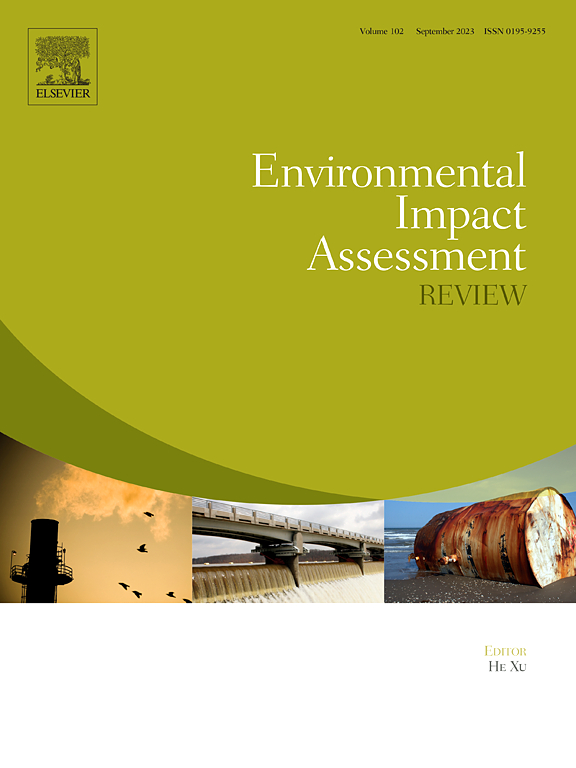Modelling impacts of infrastructure and climatic factors on reindeer forage availability in winter
IF 9.8
1区 社会学
Q1 ENVIRONMENTAL STUDIES
引用次数: 0
Abstract
The cumulative impacts of climate change and human activities on species are often studied in isolation, limiting understanding of their combined effects. The present research addresses this limitation by proposing a novel conceptual model to assess the cumulative impacts of various anthropogenic developments and environmental conditions on ungulates. The conceptual model is applied to semi-domesticated reindeer, specifically in the context of winter grazing in northern Fennoscandia, as this species is facing an increasing range and intensity of stressors detrimental to its health and survival.
The conceptual framework for the model is described, measuring forage loss due to physical, behavioural and climatic factors. Using data from previous studies, this framework is applied to assess loss of reindeer forage in winter pastures due to construction of roads, mines, hydropower stations and population centres. Results of this case study show that excluding behavioural impacts would lead to an 86 % underestimation of forage loss, while ignoring access limitations caused by snow conditions would result in an 11 % underestimation. Additionally, synergistic effects from multiple infrastructures impact 22 % of the area.
Although the model does not yet account for factors like habitat connectivity or inter-annual weather variability, it provides a multi-faceted framework for evaluating cumulative impacts, offering a more holistic approach than existing models. Its adaptability also allows for application to other regions, species, or land-use scenarios. These findings emphasise the necessity of considering cumulative impacts within environmental impact assessments used to inform sustainable land-use and conservation strategies.
基础设施和气候因素对冬季驯鹿饲料供应的模拟影响
气候变化和人类活动对物种的累积影响往往是单独研究的,限制了对其综合影响的理解。本研究通过提出一个新的概念模型来评估各种人为发展和环境条件对有蹄类动物的累积影响,从而解决了这一限制。该概念模型适用于半驯化驯鹿,特别是在芬诺斯坎迪亚北部冬季放牧的背景下,因为这个物种正面临着对其健康和生存有害的压力源的范围和强度不断增加。描述了模型的概念框架,测量了由于物理、行为和气候因素造成的饲料损失。利用以往研究的数据,该框架被应用于评估由于道路、矿山、水电站和人口中心的建设而导致的冬季牧场驯鹿饲料的损失。本案例研究的结果表明,排除行为影响将导致86%的草料损失低估,而忽略雪况导致的获取限制将导致11%的低估。此外,多个基础设施的协同效应影响了22%的地区。尽管该模型尚未考虑栖息地连通性或年际天气变率等因素,但它为评估累积影响提供了一个多方面的框架,提供了比现有模型更全面的方法。它的适应性也允许应用于其他地区、物种或土地利用情景。这些研究结果强调必须在环境影响评估中考虑累积影响,以便为可持续土地利用和保护战略提供信息。
本文章由计算机程序翻译,如有差异,请以英文原文为准。
求助全文
约1分钟内获得全文
求助全文
来源期刊

Environmental Impact Assessment Review
ENVIRONMENTAL STUDIES-
CiteScore
12.60
自引率
10.10%
发文量
200
审稿时长
33 days
期刊介绍:
Environmental Impact Assessment Review is an interdisciplinary journal that serves a global audience of practitioners, policymakers, and academics involved in assessing the environmental impact of policies, projects, processes, and products. The journal focuses on innovative theory and practice in environmental impact assessment (EIA). Papers are expected to present innovative ideas, be topical, and coherent. The journal emphasizes concepts, methods, techniques, approaches, and systems related to EIA theory and practice.
 求助内容:
求助内容: 应助结果提醒方式:
应助结果提醒方式:


